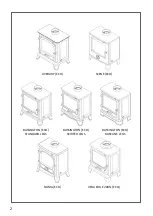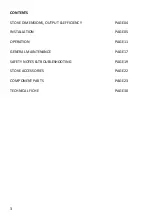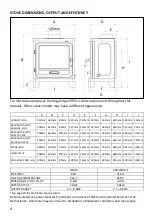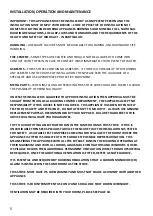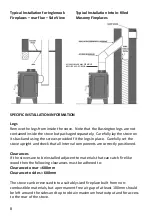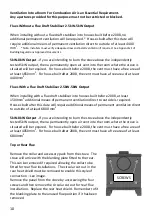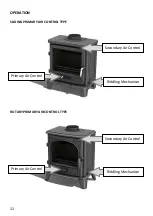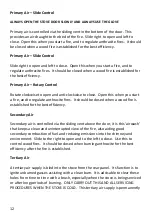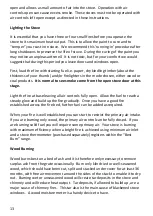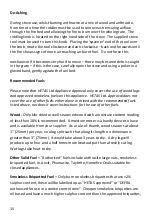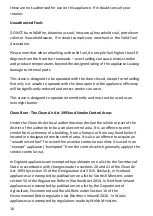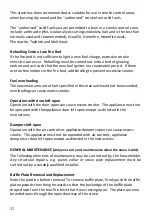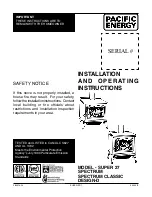
6
INSTALLATION
Once the installation is complete, the installer must advise the householder on
the correct use of the stove and warn them to use only the recommended fuels
listed in this document. The installer must also advise the householder on the
actions to be taken should smoke or fumes be emitted from the stove.
This stove must not share a chimney with any other appliance
Where the chimney is believed to have previously served an open fire
installation it is possible that the higher flue gas temperature from a closed
appliance may loosen deposits that were previously firmly adhered, with the
consequent risk of flue blockage. It is therefore recommended that the chimney
be swept a second time within a month of regular use after installation.
Check the chimney is in good condition, dry, free from cracks, leaks and
obstructions. The diameter of the flue should be no more than 230mm. If this
cannot be met then an appropriate liner should be fitted by a suitably approved
method.
A 125mm flue liner may be used in accordance with the Building Regulations.
The chimney and connecting flue pipe should not narrow to less than the size of
the outlet socket (collar) of the stove at any point. It is essential that only
recommended fuels are used – see page 15 for more information.
The chimney height and the position of the chimney terminal must conform to
Building Regulations and the latest edition of BS EN 15287-1:2007, Design,
Installation and Commissioning of Chimneys should be followed.
A flue draught of minimum 12 Pascals is required for satisfactory appliance
performance. The flue draught should be checked under fire at high output and
if it exceeds 25Pa, a draught stabiliser may be required so that the rate of
burning can be controlled, and to prevent possible over-firing.
If you have any doubts about the suitability of your chimney, consult your local
dealer/stockist. He will also be able to provide advice about the possible need
for a specialist cowl.


